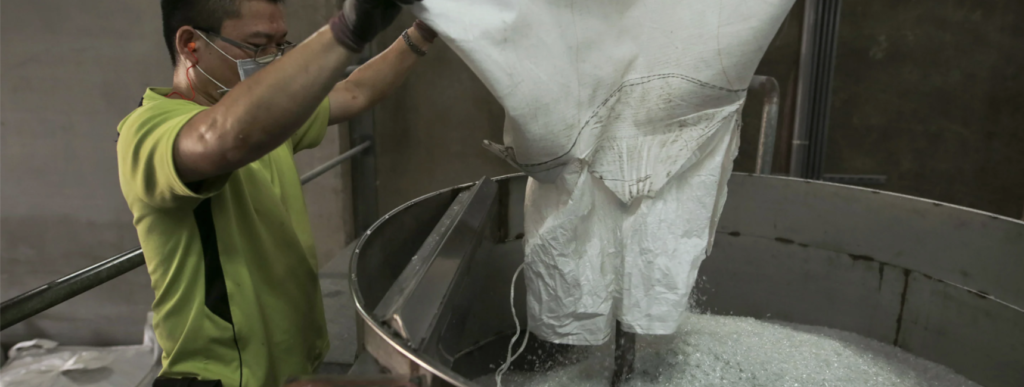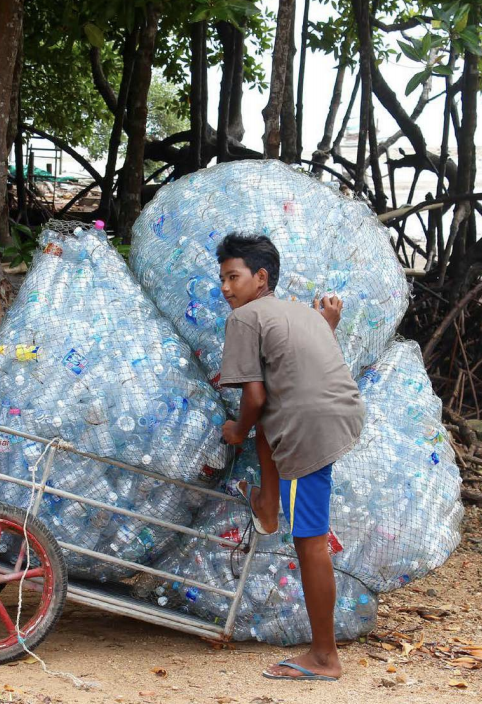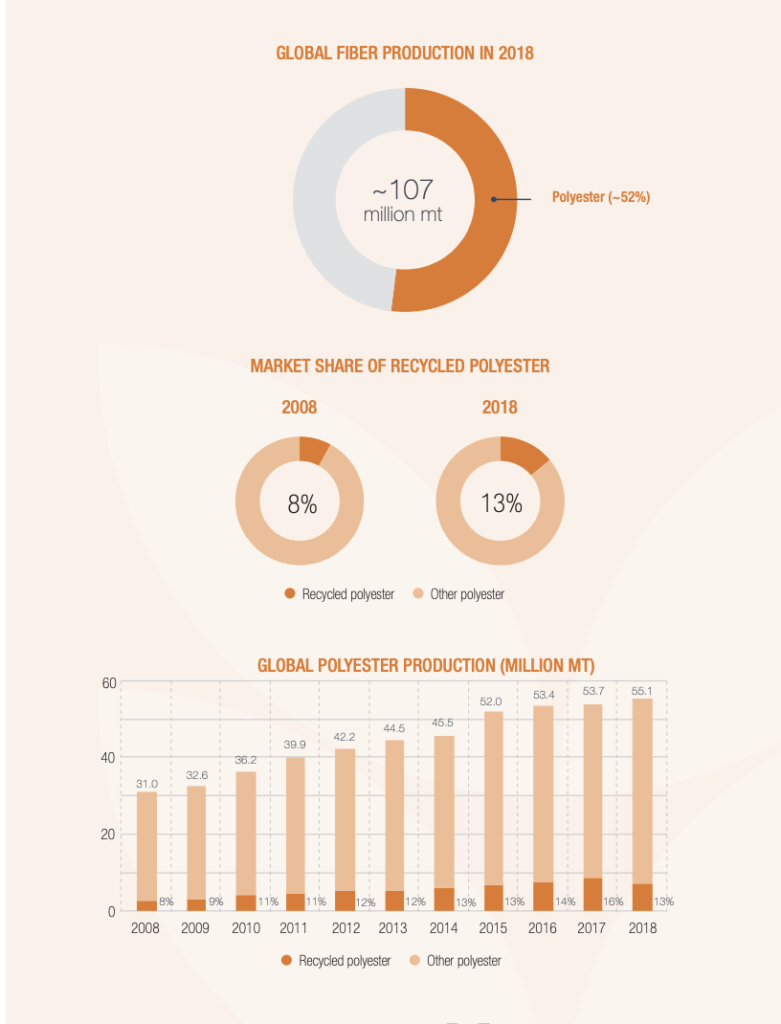Recycled Polyester

Polyester, the most widely used manufactured fiber, is made with petroleum. The manufacturing process of polyester is energy intensive and requires large amounts of crude oil. It also releases emissions including volatile organic compounds, particulate matter, and acid gases such as hydrogen chloride– all of which can cause or aggravate respiratory diseases. Fortunately, polyester fiber, fabric and garments are able to be recycled into high-quality polyester fiber. Using recycled polyester lessens our dependence on petroleum as a source of raw material and keeps it from becoming trash that pollutes our oceans and harms marine life. Considering that petroleum is a non-renewable resource this sounds like a sustainable solution—but is it really?
As recycled polyester has become increasingly prevalent in the fashion market, some experts question whether or not the material is a long-term or truly sustainable solution. Here is why it may not be:
According to Textile Exchange, recycled polyester is often made from recycled PET bottles, not old garments. Meaning, there are still garments piling up in landfills—including polyester—that is not biodegradable.
Additionally, polyester uses less energy than the production of virgin polyester. This sounds great, but how much is “less”? According to Gail Baugh from the University of Delaware, energy to produce the virgin polyester is about 18.3 Kwh per pound of fiber while recycled poly uses about 13.8 Kwh per pound. In 2018, annual production of polyester amounted to about 52 million metric tons—13% of this being recycled polyester. Now, imagine how much energy was used in the entire year despite some of it being recycled.
Lastly, it generates microfibers. Although the polyester is recycled, it does not stop the material from generating microfibers. Microfibers (or “fibrous microplastics”) are synthetic materials that shed off of garments in the wash. They have “a fibrous shape and are less than five millimeters in length” (Leonas, pg. 1). Due to their size and synthetic nature, most microfibers slip past sewage-plant filters and enter our waterways. Once in our lakes, rivers, and oceans, they may be mistaken as food by marine life. That being said, if you like fish (for example), you may be eating these synthetic materials as well.
According to Dr. Karen Leonas, microfiber reduction would include: “shifts in textiles laundering recommendations and the implementation of procedures/processes to effectively capture those fibers released. For the long term, it will be necessary to take a more holistic, systematic approach including evaluation of material designs, apparel design, and recommended after purchase care procedures that will optimize the reduction of fiber release and capture of released fibers during the material lifecycle” (Leonas, pgs. 1-2).
Overall, recycled polyester may be “more sustainable”, but it is not truly sustainable nor a long-term solution.


